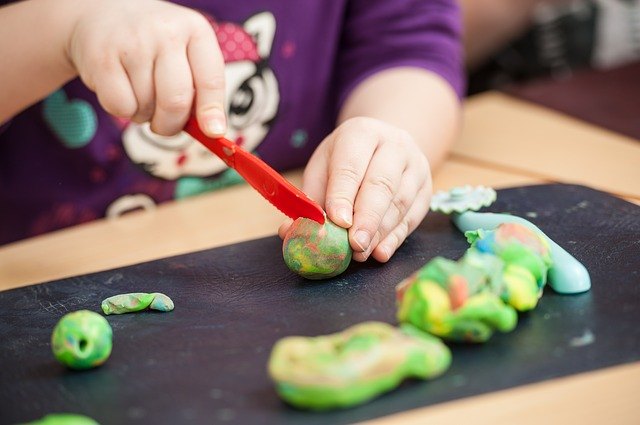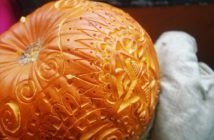If you are like the rest of us, you can remember spending hours at the kitchen table, molding and building with multi-colored Play-Doh.
The soft, pliable fun of squishy material has entertained children for generations. But do you know what goes into that dough-like substance?
Is it really dough or is it something synthetic? Can you make it yourself – say, on a snow day when you can’t run to the store to get some, or if you’re just feeling adventurous?
Turns out that you can! How to make homemade playdough is not the horrendous process you might’ve imagined.
The recipe we’re following today is without cream of tartar. Though you can use cream of tartar in a number of recipes for homemade playdough, we’ve chosen to go without in our recipe today for a variety of reasons.
Sometimes, you simply don’t have any cream of tartar in your cupboards. How many recipes can you think of that ever call for it?
Cream of tartar is used as a leavener in some desserts, but homemade playdough can be made without the hassle getting a hold of cream of tartar can create.
Not using it also cuts a lot of the cooking time down, making both you and your kids happy!
How to Make Homemade Playdough
Ingredients
READY IN: About five minutes.
- 1 cup of flour
- 1/4 cup of salt
- 3/4 cup of water
- 3 tablespoons of lemon juice
- 1 tablespoon of vegetable oil
- Food coloring of any color you would like
- Any scents you would like, such as lemon or ginger. Be sure to dilute any essential oils.
Directions
The first step in throwing together this easy-to-make mixture is adding the water, oil, and lemon juice to a medium, non-stick pot.
(The vegetable oil is working as a replacement for the cream of tartar, in case you were wondering.)
With those three things mixed together, turn the heat of the stove to medium.
If your stovetop is particularly warm – such as with gas stoves, or if you’ve just finished cooking something – even lower than that is fine. We’d rather it be cooler than hotter.
Let this combination sit on the stove while we move on to the next step.
With that sitting on the stovetop, add the food coloring. Just a few drops will do – one to five drops should be enough. If you feel like it isn’t bright enough for you, feel free to add a couple more.
With the color added, drop in the liquid scents you’ve chosen into the water mixture and stir until everything is a nice even texture. Again, add this at an amount that reflects how strongly you want it to smell.
Thirdly, in a separate mixing bowl away from the stovetop, combine the flour and salt. Mix well and then head back to your bowl on the stove.
When the water mixture is hot, but not boiling, grab the dry bowl, and very carefully and slowly add the flour and salt to the pot while mixing.

Combine well, using a wooden or plastic spoon until everything is smooshed together. Continue stirring; this will cause your mixture to dry out soon enough and begin to form into the tell-tale ball we are looking for.
Keep the stove on during in this procedure.
If the ball seems to be refusing to dry out, keep stirring, moving the sticky part to the bottom of the pot where it can soak up some of the heat. Be sure not to cook it too long; just until the stickiness disappears.
Flip it back and forth often to ensure it doesn’t get burned to the pan. Keep in mind that it is better to be undercooked because it will tense up and get slightly thicker as it cools down.
And there you have it! Your own homemade playdough without the annoyance of having to use expensive cream of tartar for an afternoon play toy, finished in a handful of minutes.
Scrape out your ball onto a sheet of wax paper and give it time to cool down, around fifteen minutes. Once it is cool, you need to knead the dough for a minute or two to make sure it holds its shape.
Once that is done, your homemade playdough is ready for playtime!
Tips and Tricks on How to Make Playdough
If you are hesitant to use liquid scents, you can replace those oils with Kool-Aid packages of your choice in scent and color.
Keep in mind that the Kool-Aid will add more color to your dough, so you won’t need as much food coloring, if any at all.
This recipe will make a batch that fits perfectly inside a 16 oz. plastic container.
Using an airtight container, you can ensure the playdough lasts for quite a few play sessions, and keeping the plastic container inside the refrigerator will prolong the playdough’s life even more.
The video below shows an example of how to make playdough with Kool-Aid.
How do you make playdough?






